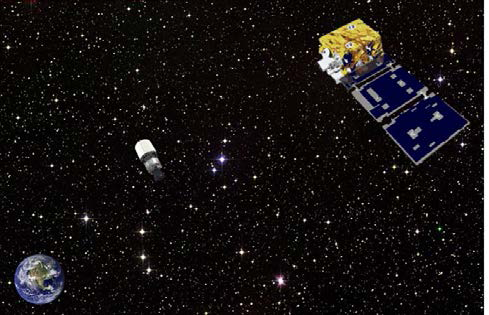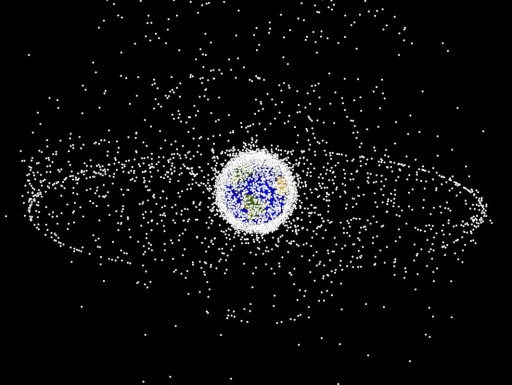ANGELS Satellite Overview

ANGELS is a project of the U.S. Air Force Research Laboratory’s (AFRL) Space Vehicles Directorate to advance the development of localized monitoring and awareness capabilities in space. Orbital Sciences is the prime contractor for the ANGELS NanoSat that has a mass of around 70 to 90 Kilograms. The contract for the project was awarded in 2007 valued at $29.5 million.
The full name of the ANGELS satellite is the Autonomous Nanosatellite Guardian for Evaluating Local Space. ANGELS builds on the XSS-10 and XSS-11, two eXperimental Small Satellites. XSS-10 was a 28-Kilogram satellite package launched on a Delta II in 2003. The microsatellite completed a 24-hour mission after separating from the Delta II upper stage to complete flyarounds of the stage to inspect the upper stage using a camera while maneuvering was provided by a line-of-sight guidance with basic inertial maneuvering architecture. The XSS-10 mission demonstrated close rendezvous capability within 100 meters.
XSS-11 flew in 2005, being launched on a Minotaur I rocket to build on knowledge gathered with XSS-10 to conduct extended rendezvous and stationkeeping operations in orbit. The mission included standoff inspection demonstrations and circumnavigation of a resident object in space over an extended period of time.
This mission demonstrated proximity operation software, miniature proximity navigation sensors including a laser ranging system, a modular payload interface, and command and control techniques for proximity operations including safety and verification procedures.
These programs provide valuable lessons for the development of rendezvous systems for asteroid sample retrievals and the development of strategic space-based defence system to protect satellites in space from dangers like anti-satellite weapons.
ANGELS will be tasked with monitoring a larger satellite and performing a number of rendezvous and navigation maneuvers around the satellite to demonstrate navigation software, sensors and propulsion.
The primary payload of the satellite is a Space Situational Awareness sensor, likely an imaging payload to acquire high-resolution imagery of satellites in Geostationary Orbit.

The ANGELS satellite will conduct its mission several hundred Kilometers above Geostationary Orbit after separating from the Delta IV upper stage.
At a range of 50 Kilometers from the upper stage, the ANGELS satellite will begin its rendezvous process that will take several months for the satellites to arrive at the upper stage since the rendezvous is a cautious and deliberate sequence. Once inside a few Kilometers, testing of the capabilities of the sensor payload begins. The experiment includes several hold points at which ground commanding has to provide the permission to proceed with the rendezvous, creating a man-in-the-loop system for the entire mission.
The satellite will be used to explore increased levels of mission automation and automatic mission planning and execution. In addition to testing the capabilities of the navigation system and the Space Situational Awareness Sensor, ANGELS will also demonstrate a GPS system that uses NASA developed algorithms to derive valid navigation data from GPS side lobe signals available in Geostationary Orbit that is well above the Medium Earth Orbit of the GPS satellites. Furthermore, ANGELS is equipped with micro-accelerometers to precisely measure spacecraft accelerations for enhanced guidance and navigation.
A built-in safety system will be demonstrated to reduce the probability of a collision with target satellite or any other satellite in the congested environment of the Geostationary Belts. The ANGELS mission is expected to last at least one year.
